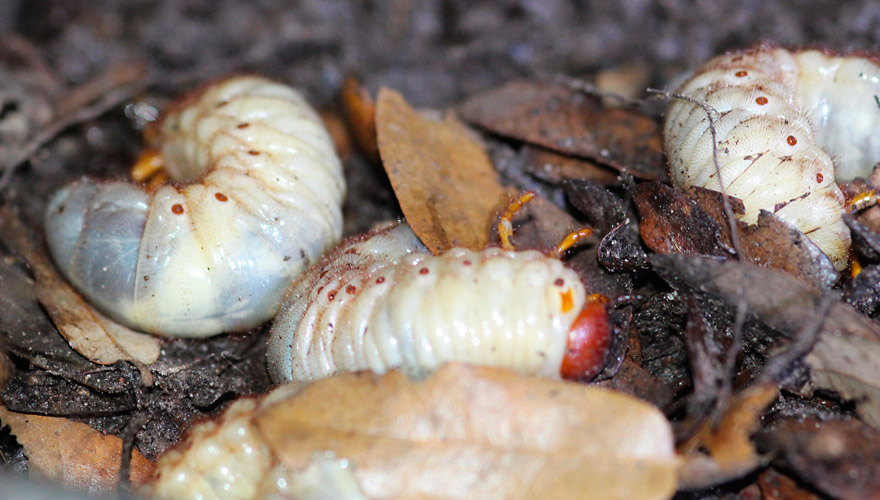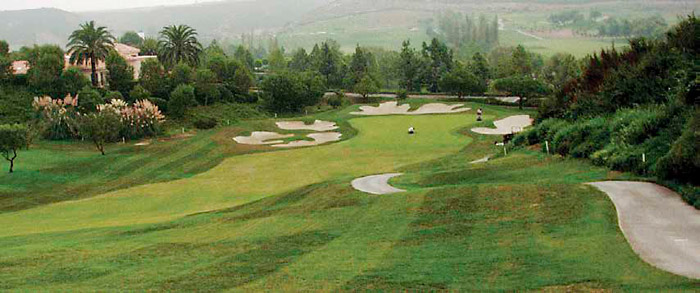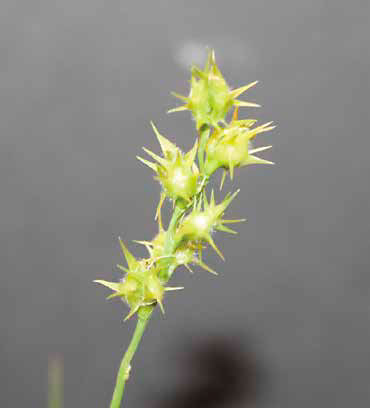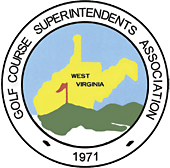Integrated Pest Management

The philosophy of integrated pest management (IPM) was developed in the 1950s because of concerns over increased pesticide use, environmental contamination, and the development of pesticide resistance. The objectives of IPM include reducing pest management expenses, conserving energy, and reducing the risk of pesticide exposure to people, animals, and the environment. Its main goal, however, is to reduce pesticide use by using a combination of tactics to control pests, including cultural, biological, genetic, and chemical controls.
Pest management on golf courses results in significant inputs of time, labor, and financial resources. To grow healthy turfgrass, it is important for golf course superintendents to know what IPM is and how to implement it for each pest group (arthropods, nematodes, diseases, and weeds). They must be well-versed in pest identification, understand pest life cycles and/or conditions that favor pests, and know about all possible methods of controlling pests.
Regulatory Considerations
Principles
- Some federal or state regulations cover practically anyone who manufactures, formulates, markets, and uses pesticides.
- Record keeping of pesticide use may be required by law. IPM principles suggest that you keep records of all pest control activity so that you may refer to information on past infestations or other problems to select the best course of action in the future.
Best Management Practices
- Proper records of all pesticide applications should be kept according to local, state, or federal requirements.
- Use records to establish proof of use and follow-up investigation of standard protocols regarding:
- Date and time of application
- Name of applicator
- Person directing or authorizing the application
- Weather conditions at the time of application
- Target pest
- Pesticide used (trade name, active ingredient, amount of formulation, amount of water)
- Adjuvant/surfactant and amount applied, if used
- Area treated (acres or square feet) and location
- Total amount of pesticide used
- Application equipment
- Additional remarks, such as the severity of the infestation or life stage of the pest
- Follow-up to check the effectiveness of the application
IPM Overview
Principles
- The fundamental basis of an environmentally sound pest control program is a process called IPM.
- IPM focuses on the basics of identifying the pests, choosing pest-resistant varieties of grasses and other plants, enhancing the habitat for natural pest predators, scouting to determine pest populations and determining acceptable thresholds, and applying biological and other less toxic alternatives to chemical pesticides whenever possible.
- Chemical controls should have minimal effect on beneficial organisms and the environment and minimize the development of pesticide resistance.
Best Management Practices
- Chemical pesticide applications should be carefully chosen for effective and site-specific pest control with minimal environmental impact.
- Identify key pests on key plants.
- Determine the pest’s life cycle, and know which life stage to target (for an insect pest, whether it is an egg, larva/nymph, pupa, or adult).
- Use cultural, mechanical, or physical methods to prevent problems from occurring (for example, prepare the site, select resistant cultivars), reduce pest habitat (for example, practice good sanitation, carry out pruning and dethatching), or to help promote biological control (for example, provide nectar or honeydew sources).
- Decide which pest management practice is appropriate and carry out corrective actions. Direct control where the pest lives or feeds.
- Use preventive chemical applications only when your professional judgment indicates that properly timed preventive applications are likely to control the target pest effectively while minimizing the economic and environmental costs.
- Determine whether the corrective actions actually reduced or prevented pest populations, were economical, and minimized risks. Record and use this information when making similar decisions in the future.
Written Plan
Principles
- IPM is an overall pest management strategy that includes biological controls, cultural methods, pest monitoring, other applicable practices, and is a last measure when threshold levels are exceeded.
- A pest-control strategy should be used only when the pest is causing or is expected to cause more damage than what can be reasonably and economically tolerated. A control strategy should be implemented that reduces the pest numbers to an acceptable level while minimizing harm to non-targeted organisms.
- When a pesticide application is deemed necessary, its selection should be based on effectiveness, toxicity to non-target species, cost, and site characteristics, as well as its solubility and persistence.
Best Management Practices
- Decide which pest management practice(s) are appropriate and carry out corrective actions. Direct control where the pest lives or feeds. Use properly timed preventive chemical applications only when your professional judgment indicates they are likely to control the target pest effectively, while minimizing the economic and environmental costs.
- Determine whether the corrective actions actually reduced or prevented pest populations, were economical, and minimized risks. Record and use this information when making similar decisions in the future.
- Observe and document turf conditions regularly (daily, weekly, or monthly, depending on the pest), noting which pests are present, so intelligent decisions can be made regarding how damaging the pests are and what control strategies are necessary.
Pest Thresholds
Principles
- IPM is commonly used in agricultural crop production, where the economic thresholds for key pests have been determined. Pest levels exceeding the site’s threshold warrant treatment.
- Using IPM is more challenging on golf courses than in an agricultural setting. The golf industry is sensitive to aesthetic damage, and golfers are often intolerant of anything that could affect the appearance of turfgrass and ornamental plants. Increased education of golfers and maintenance personnel could raise their tolerance of minor aesthetic damage without compromising plant health, play, and aesthetics.
Best Management Practices
- Use available pest thresholds to guide pesticide application decisions (see IPM Guide).
- Use preventive chemical applications only when professional judgment indicates that properly timed preventive applications are likely to control the target pest effectively while minimizing the economic and environmental costs.
- Record and use this information when making similar decisions in the future.
Monitoring
Principles
- Monitoring, or scouting, is the most important element of a successful IPM program. Monitoring documents the presence and development of pests, or the conditions that are conducive for pest outbreak throughout the year.
- It is essential to record the results of scouting in order to develop historical information, document patterns of pest activity, and document successes and failures.
Best Management Practices
- Train personnel to observe and document turf conditions regularly (daily, weekly, or monthly, depending on the pest), noting which pests are present, so intelligent decisions can be made regarding how damaging they are and what control strategies are necessary.
- Train personnel to determine the pest’s life cycle, and know which life stage to target (for an insect pest, whether it is an egg, larva/nymph, pupa, or adult).
- Train personnel to determine whether the corrective actions actually reduced or prevented pest populations, were economical, and minimized risks. Record and use this information when making similar decisions in the future.
- Train personnel to document, identify, and record key pest activities on key plants.
- Look for signs of the pest. These may include mushrooms, animal damage, insect frass, or webbing.
- Identify the symptoms of the pest. Look for symptoms such as chlorosis, dieback, growth reduction, defoliation, mounds, or tunnels.
- Determine the damage. Problem areas might include the edges of fairways, shady areas, or poorly drained areas.
- Document when the damage occurred. Note the time of day, year, and flowering stages of nearby plants.
- Map pest outbreaks locations to identify patterns and susceptible areas for future target applications and ultimate pesticide reductions.
Record Keeping
Principles
- It is essential to record the results of scouting in order to develop historical information, document patterns of pest activity, and document successes and failures.
- Record keeping is required to comply with the federal Superfund Amendments and Reauthorization Act (SARA, Title III), which contains emergency planning and community right-to-know legislation
- Certain pesticides are classified as restricted-use pesticides (RUPs). Very few pesticides in this category are routinely used in turf maintenance, but if you happen to use one of them, certain record-keeping requirements apply.
Best Management Practices
- Document, identify, and record key pest activities on key plants and locations.
- Determine the pest’s life cycle, and know which life stage to target (for an insect pest, whether it is an egg, larva/nymph, pupa, or adult).
- Determine whether the corrective actions actually reduced or prevented pest populations, were economical, and minimized risks. Record and use this information when making similar decisions in the future.
- Observe and document turf conditions regularly (daily, weekly, or monthly, depending on the pest), noting which pests are present, so intelligent decisions can be made regarding how damaging they are and what control strategies are necessary.
Turfgrass Selection
Principles
- Selecting pest-resistant cultivars or plant species is a very important part of IPM, and it leads to reduced pesticide usage. Species grown outside of their zone of adaptation are more prone to pest problems.
- Species and cultivars should be managed under conditions similar to their intended use (for example, not exceeding mowing height limitations that a grass was bred for or selected for).
- Educate builders, developers, golf course and landscape architects, sod producers, golfers and others on which plants are best suited to their areas.
- Turfgrasses must be scientifically selected for the eco-region of the golf course, resulting in minimized irrigation requirements, fertilization needs, and pesticide use.
Best Management Practices
- Select the most suitable turfgrass for existing conditions and one that adheres to design specifications.
- Avoid use of turfgrass in heavy shade.
- Select shade-adapted grasses for areas receiving partial sun or shaded areas.
- Reduce pest and disease pressures by correcting dead spots and air-circulation issues by pruning understory and adjusting irrigation scheduling.
- Reduce fertilizer applications in shaded areas.
- Reduce traffic in shaded areas to protect turfgrasses and trees from injury and soil compaction, if practical.
Biological Controls
Principles
- The biological component of IPM involves the release and/or conservation of natural predators, such as parasites and pathogens, and other beneficial organisms (pollinators).
- Natural enemies (including ladybird beetles, green lacewings, and mantids) may be purchased and released near pest infestations.
- Areas on the golf course can also be modified to better support natural predators and beneficial organisms.
Best Management Practices
- Identify areas on the golf course that can be modified to attract natural predators, provide habitat for them, and protect them from pesticide applications.
- Install flowering plants that can provide parasitoids with nectar, or sucking insects (aphids, mealybugs, or soft scales) with a honeydew source.
- Avoid applying pesticides to roughs, driving ranges, or other low-use areas to provide a refuge for beneficial organisms.
- Release insect-parasitic nematodes to naturally suppress mole crickets and white grubs.
Pollinators
Principles
- It is important to minimize the impacts on bees and beneficial arthropods. Pesticide applicators must use appropriate tools to help manage pests while safeguarding pollinators, the environment, and humans.
- Pollinator-protection language is a label requirement found on pesticide labels.
- Be mindful of pollinators; when applying pesticides, focus on minimizing exposure to non-target pollinators in play and non-play course areas.
- Pollinators may be negatively impacted when pesticide applications are made based on insufficient information and/or made without regard to the safety of pollinators.
Best Management Practices
- When using pesticides, minimize injury and damage by following label directions.
- Follow label information concerning the application of pesticides when plants may be in bloom. Avoid applying pesticides during bloom season.
- Stay on target by using coarse-droplet nozzles and monitor wind to reduce drift.
- Do not apply pesticides when pollinators are active.
- Before applying a pesticide, scout/inspect area for both harmful and beneficial insect populations, and apply only when the indicated threshold of damage has been reached.
- Mow flowering plants (weeds) before insecticide application.
- If flowering weeds are prevalent, control them before applying insecticides.
- Use insecticides that have a lower impact on pollinators.
- Use the latest spray technologies, such as drift-reduction nozzles to prevent off-site (target) translocation of pesticide.
- Avoid applications during unusually low temperatures or when dew is forecasted.
- Use granular formulations of pesticides that are known to be less hazardous to bees.
- Consider lures, baits, and pheromones as alternatives to insecticides for pest management.
Conventional Pesticides
Principles
- IPM does not preclude the use of pesticides. However, pesticides should be viewed as one of the many tools used to minimize pest problems.
- IPM involves both prevention — keeping the pest from becoming a problem — and suppression — reducing the pest numbers or damage to an acceptable level.
- A pest-control strategy using pesticides should be used only when the pest is causing or is expected to cause more damage than what can be reasonably and economically tolerated.
- Pesticides are designed to control or alter the behavior of pests. When, where, and how they can be used safely and effectively is a matter of considerable public interest.
- Pesticides should be evaluated on effectiveness against the pest, mode of action, life stage of the pest, personnel hazards, non-target effects, potential off-site movement, and cost.
- A control strategy should be implemented that reduces the pest numbers to an acceptable level while minimizing harm to non-targeted organisms.
- Always follow the directions on the label. These directions have been developed after extensive research and field studies on the chemistry, biological effects, and environmental fate of the pesticide. The label is the single most important document in the use of a pesticide. State and federal pesticide laws require following label directions!
Best Management Practices
- Train employees in proper pest identification and pesticide selection techniques.
- Choose the product most appropriate for the problem or pest.
- Mix only the quantity of pesticide needed in order to avoid disposal problems, protect non-target organisms, and save money.
- Spot-treat pests whenever appropriate.
- Make note of any environmental hazards and groundwater advisories included on the label.
- Rotate pesticide modes-of-action to reduce the likelihood of resistance.
- Follow guidelines and advice provided by the Fungicide Resistance Action Committee (FRAC), Herbicide Resistance Action Committee (HRAC),and Insecticide Resistance Action Committee (IRAC).
Disease
- In the presence of a susceptible host and a conducive environment, plant pathogens can disrupt play by damaging and destroying intensely managed turf.
- No measure can completely eliminate the threat of turfgrass disease on a golf course. However, turfgrass managers have multiple tactics and tools that can reduce the likelihood of disease.
- Cultural factors that can influence turfgrass stress and the likelihood of disease problems include organic layer management, fertility programs, water management, and mowing height selection. Healthy, well-managed turfgrass is less likely to develop disease problems.
- Disease outbreaks that do occur are less likely to be severe on turf that is healthy because it has better recuperative potential than stressed, unhealthy turf.
Best Management Practices
- Correctly identify the disease pathogen. This often involves sending samples to diagnostic clinics.
- Ensure that proper cultural practices that reduce turfgrass stress are used.
- Correct conditions that produce stressful environments for the turf (for example, improve airflow and drainage, reduce or eliminate shade.)
- Fungicide use should be integrated into an overall management strategy for a golf course.
- The appropriate (most effective) preventive fungicide should be applied to susceptible turfgrasses when unacceptable levels of disease are likely to occur.
- Preventively apply appropriate fungicides where diseases are likely to occur and when conditions favor disease outbreaks.
- Record and map disease outbreaks and identify trends that can help guide future treatments and focus on changing conditions in susceptible areas to reduce disease outbreaks.

Weeds
Principles
- Weeds compete with desired plants for space, water, light, and nutrients and can harbor insect pests and diseases.
- Weed management is an integrated process where good cultural practices are employed to encourage desirable turfgrass ground cover, and where herbicides are intelligently selected and judiciously used. A successful weed management program consists of:
- preventing weeds from being introduced into an area
- using proper turfgrass management and cultural practices to promote vigorous, competitive turf
- properly identifying weeds
- properly selecting and using the appropriate herbicide, if necessary
- Weeds are hosts for other pests such as plant pathogens, nematodes, and insects, and certain weeds can cause allergic reactions in humans.
- Weeds reproduce from seed, root pieces, and special vegetative reproductive organs such as tubers, corms, rhizomes, stolons, or bulbs. People, animals, birds, wind, and water can distribute seeds.
- Weeds complete their life cycles in either one growing season (annuals), two growing seasons (biennials), or three or more years (perennials). Annuals that complete their life cycles from spring to fall are referred to as summer annuals. Those that complete their life cycles from fall to spring are winter annuals.
Best Management Practices
- Proper weed identification is essential for effective management and control.
- Select appropriate turf species or cultivars that are adapted to the prevalent environmental conditions to reduce weed encroachment that may lead to bare soils.
- To prevent weed encroachment, adopt or maintain cultural practices that protect turfgrass from environmental stresses such as shade, drought, and extreme temperatures.
- To reduce weed infestation, address improper turf management practices, such as the misuse of fertilizers and chemicals, improper mowing height or mowing frequency, and improper soil aeration, and physical damage and compaction from excessive traffic.
- Proper fertilization is essential for turfgrasses to sustain desirable color, growth density, and vigor and to better resist diseases, weeds, and insects.
- Avoid scalping; it reduces turf density, increasing weed establishment.
- Weed-free materials should be used for topdressing.
- Address damage from turfgrass pests such as diseases, insects, nematodes, and animals to prevent density/canopy loss to broadleaf weeds.
- Record and map weed infestations to help identify site specific issues for preventative actions.
Nematodes
Principles
- Plant-parasitic nematodes adversely affect turfgrass health.
- Plant-parasitic nematodes are microscopic roundworms (unsegmented), usually between 0.0156 and 0.125 inch (0.25 and 3 mm) in length, and are difficult to control.
- Nematodes debilitate the root system of susceptible turfgrasses; plant-parasitic nematodes cause turf to be less efficient at water and nutrient uptake from the soil and make it much more susceptible to environmental stresses. Additionally, weakened turf favors pest infestation, especially troublesome weeds that necessitate herbicide applications.
- Over time, turf in the affected areas thins out and, with severe infestations, may die. The roots of turfgrasses under nematode attack may be very short, with few, if any, root hairs, or they may appear dark and rotten.
- Turfgrasses usually begin showing signs of nematode injury as they experience additional stresses, including drought, high temperatures, low temperatures, and wear.
Best Management Practices
- When nematode activity is suspected, an assay of soil and turfgrass roots is recommended to determine the extent of the problem.
- The application of a nematicide on golf course turf should always be based on assay results.
- Divert traffic away from areas that are stressed by insects, nematodes, diseases, or weeds.
- Increase mowing height to reduce plant stress associated with nematodes, root-feeding insects, disease outbreaks, or peak weed-seed germination.
- Reduce/eliminate other biotic/abiotic stresses when nematodes are compromising the root system and plant health.





